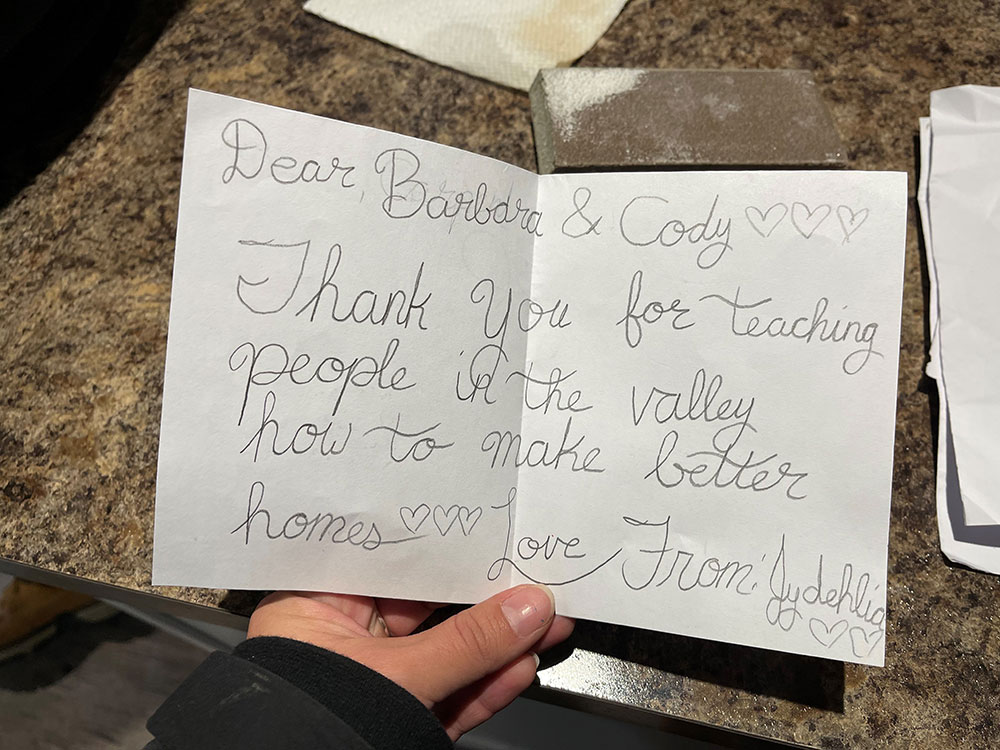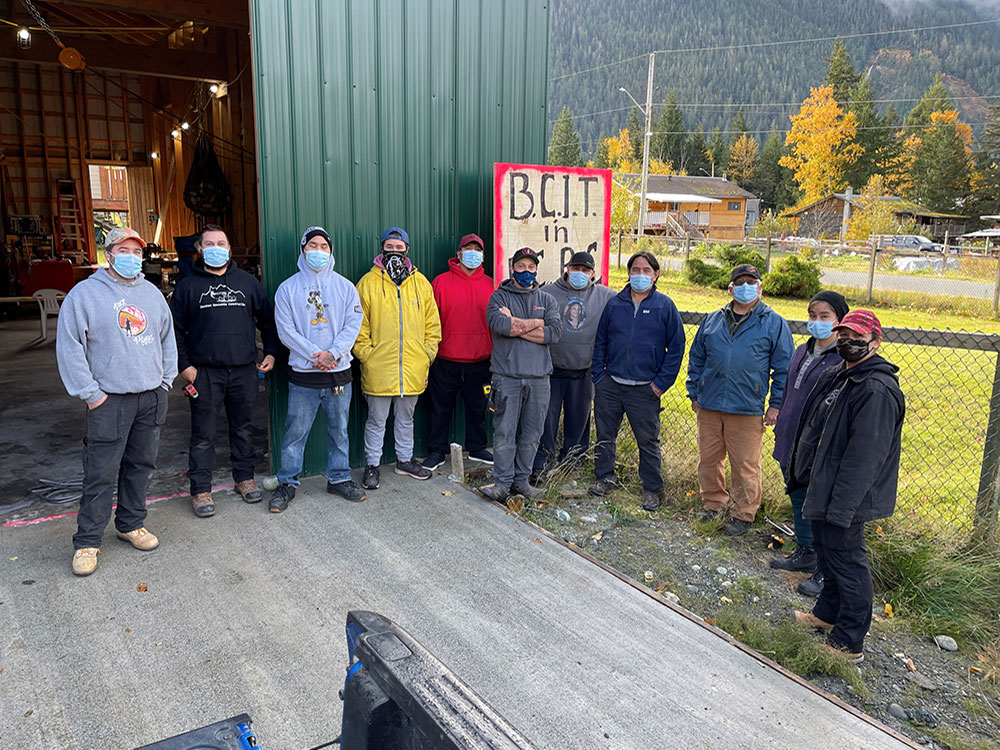When one imagines a warm, cozy home, “energy efficient” isn’t necessarily the first descriptor that leaps to mind. But homes that are well-insulated and properly ventilated keep their inhabitants comfortable, particularly throughout the cold, damp B.C. winters. They’re also more affordable for residents, who don’t need to keep the heat cranked in order to stay warm, and better for the environment.
These issues are critical for First Nations in B.C., many of whom are facing a serious crisis of scarce and insufficient housing. According to BC Housing, more than one-third of homes on reserve need major repairs.
First Nations communities also face home energy costs that are twice as high as those of other B.C. families — and up to three times as high for remote Indigenous communities.
Since 2016, the Fraser Basin Council has been working to address these inequities through the First Nations Home EnergySave program, which supports First Nations communities to transition to energy-efficient housing and build local capacity through training opportunities, networking and peer mentorship.
Leanne Sexmith of the Real Estate Foundation of BC, who nominated Fraser Basin Council for the Built Environment Land Award, wrote, “The program is addressing energy poverty and deep systemic housing issues particularly in remote communities, [and] bringing communities together to significantly improve the energy efficiency and sustainability of housing in First Nations communities.”
That work unfolds in many ways, says Tom Welfare, program lead for First Nations Home EnergySave at the Fraser Basin Council. “We work quite closely with Indigenous leaders in the community who are working on sustainability or energy efficiency in some way. The focus is to support them and build their capacity to plan and implement projects.”
“A large focus of how we work and operate is on amplifying the voices of Indigenous communities, and we work closely with communities to make sure that the decisions and the projects that we deliver are Indigenous-led solutions,” Welfare adds.
Energy-efficient homes have a few common features: they’re air-tight and well-insulated, to prevent warm air from leaking out and cold air from seeping in, and good ventilation to ensure proper airflow indoors.
The First Nations Home EnergySave program collaborates with Indigenous communities to build new homes that meet these energy-efficient standards, as well as on upgrading existing homes. Communities like Kanaka Bar Indian Band have worked with the program on initiatives to improve the energy-efficiency and safety of homes in their communities.
According to Kanaka Bar Indian Band’s Chief Patrick Michell, upgraded homes became 40 per cent more airtight through improved insulation and other renovations.

In addition to supporting Indigenous communities in navigating funding programs and implementing their energy-efficiency plans, the program focuses on building local capacity through online and in-person events.
“We bring a lot of voices to the table,” says Welfare. “Through things like workshops, webinars and trainings. We share stories and profile great practices for other communities to learn from, and run a lot of mentorship-style programs.”
Members of more than fifty First Nations from across B.C. participated in virtual training programs last year, in addition to in-person learning opportunities. Last year, a series of 12 virtual training sessions reached more than 300 people from 52 First Nations across B.C.
To increase the accessibility of educational content, webinars and events are archived through YouTube videos, podcasts and success stories on the website. One recent success story comes from the Westbank First Nation, where 12 Indigenous youth were recently trained in energy-efficient construction. The Residential Energy Efficiency Works program, designed by FortisBC, allowed participants to gain hands-on skills by constructing an energy-efficient garden shed, which was donated back to the nation. Seven participants have already secured employment in construction, while two more are pursuing additional education.
Another program, called Train the Trainer, is delivered in partnership with the Aboriginal Housing Management Association and the British Columbia Institute of Technology. This program brings together Indigenous construction experts and student trainees from communities across the province to develop their skills and knowledge; after completing the program, trainees teach energy-efficiency workshops in their own communities.
“Retrofitting homes, and building new homes, has far-reaching impacts that go beyond heating bills and carbon emission reductions.” Welfare says.
“It’s an opportunity to build capacity within communities. I know a lot of communities are very focused on building their own workforces, their own carpentry and construction teams, so creating employment opportunities is a big component.”
Equally important, says Welfare, are the direct benefits for the people living in these homes.
“When you’re making a home energy-efficient, you’re making it more comfortable. You’re making it a healthier home. If the home has good airflow, if it’s well-insulated, then you’re directly improving that person’s health,” he explains.
“We see energy efficiency as an integral part of reducing health inequities.” ![]()
Read more: Indigenous, Education, Housing
This article is part of a Tyee Presents initiative. Tyee Presents is the special sponsored content section within The Tyee where we highlight contests, events and other initiatives that are either put on by us or by our select partners. The Tyee does not and cannot vouch for or endorse products advertised on The Tyee. We choose our partners carefully and consciously, to fit with The Tyee’s reputation as B.C.’s Home for News, Culture and Solutions. Learn more about Tyee Presents here.

















Tyee Commenting Guidelines
Comments that violate guidelines risk being deleted, and violations may result in a temporary or permanent user ban. Maintain the spirit of good conversation to stay in the discussion.
*Please note The Tyee is not a forum for spreading misinformation about COVID-19, denying its existence or minimizing its risk to public health.
Do:
Do not: